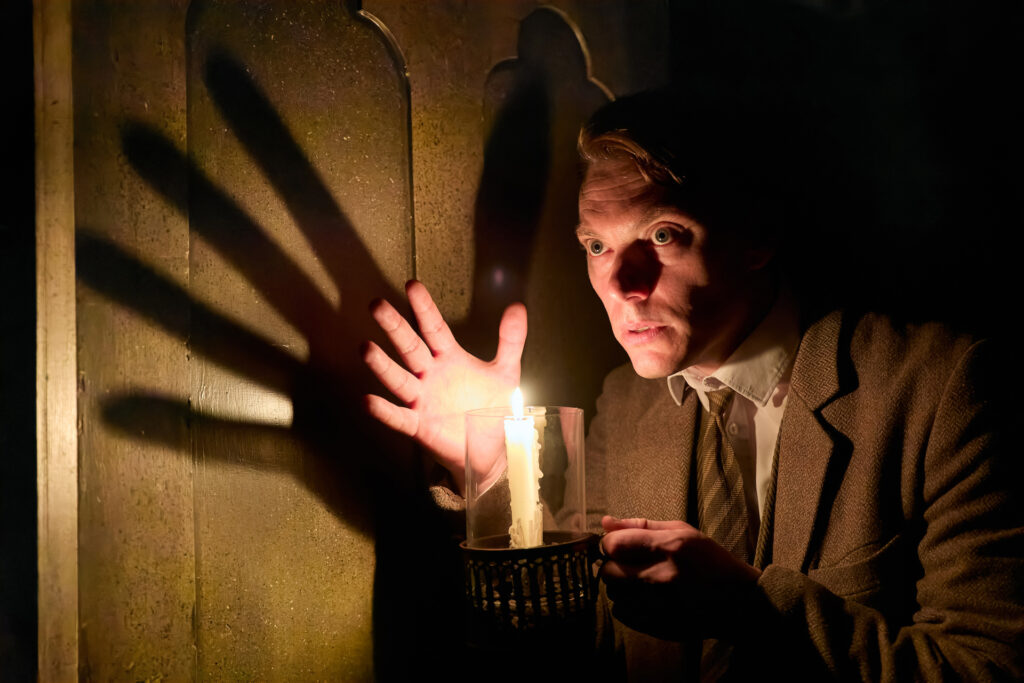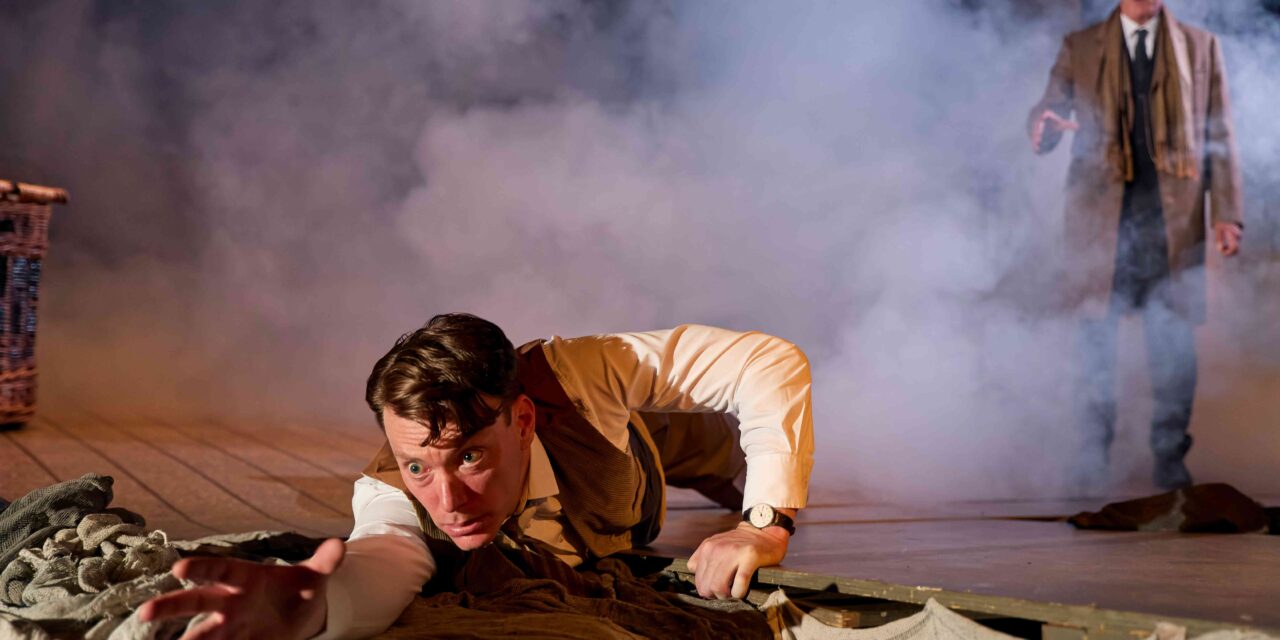
7 – 11 November
It is now forty years since Susan Hill penned her most celebrated work, “The Woman in Black”, an enduringly popular ghost story in its own right, but one which has also spawned one of the most popular stage shows of recent times in the late Stephen Mallatratt’s award-winning and long-running production. Prior to its final performance at the West End’s Fortune Theatre earlier this year, “The Woman in Black” had been terrifying London theatregoers for three and a half decades, in tandem with numerous national tours running concurrently around the provinces since 1989. The tale has come to define the modern ghost story, with this latest extensive tour proving there is no sign of it losing its appeal. It is, according to the Daily Telegraph, “the most brilliantly effective spine-chiller you will ever encounter.” Few would disagree.
Director Robin Herford originally commissioned Mallatratt to write a low-budget play for the festive season at the Stephen Joseph Theatre in Scarborough in 1987. With limited resources and funds, he opted for a minimalist adaptation of Hill’s story, a remarkable two-hander which draws significantly on the power of the human imagination to explore and enjoy, in Mallatratt’s words, the “essential simplicity and innate theatricality with which we tell our story”.
Malcolm James and Mark Hawkins are the latest in a long line of actors to present to us this masterpiece of stagecraft and invention, where an ageing Arthur Kipps (James) enlists the help of a young actor (Hawkins) to tell his story of supernatural events at Eel Marsh House, and in so doing, try to exorcise his ghosts from his troubled past. Much is left to the audience’s imagination as the actors seamlessly create and interchange roles through the simple donning of a hat, or a change of accent, with which to suggest different characters, whereas rudimentary props such as a wicker basket represent a bed one minute, a pony and trap the next. We transition smoothly and realistically from one location to another – the foggy streets of London become the train to Crythin Gifford, the evocative graveyard, the treacherous Nine Lives Causeway – with such simplicity. Yet it is all totally believable and utterly compelling, such is the power of suggestion allied to the versatility of two such talented actors. Lighting is cleverly employed to reveal hitherto unseen locations behind a gauze curtain, a range of sound effects will have you jumping regularly from your seats, smoke machines vividly create the sinister sea frets which engulf Eel Marsh House as well as the audience, an empty rocking chair, terrifyingly, moves on its own, a music box plays unaided: all of these wonderful theatrical elements combine to immerse us in a nerve-shredding, tension-filled thriller, one which tips you onto the edge of your seat, and then leaves you perched there for two exhausting hours. It is theatre at its finest.
Subtle changes since the show’s inception means the performance continues to evolve over time, refreshing the tale for new audiences and allowing a cast which changes annually to bring new ideas and perspectives to their roles, and preventing what Herford calls “endless carbon copies of the original production”. And yet this is a play which consistently delivers a thrilling and unforgettable theatrical experience to audiences up and down the country, with many, myself included, returning multiple times over the years. It is a haunting tale in more ways than one. I cannot recommend it highly enough.
★★★★★ Tony Clarke 8 November 2023
photo credit: Mark Douet


